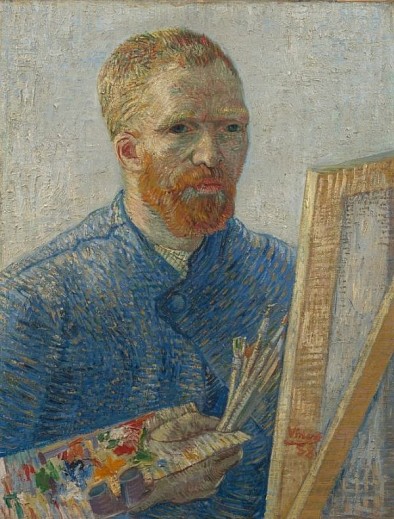
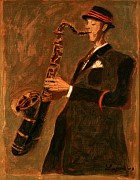
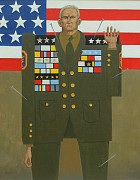
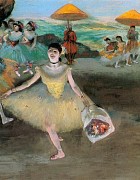
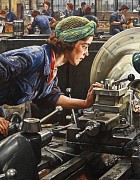
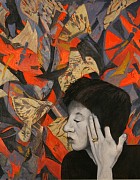
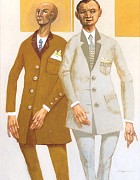
Working: Applied Creativity
September 10, 2020 - By Joy Reed Belt
The act, psychology, content, purpose and the intrinsic reward of “Work” has always fascinated me. Growing up, I would interview almost every adult I met, even perfect strangers, about the kind of work they did, how they got their job, and whether or not they liked it. From a very young age, I desperately wanted a job. Of course my parents would tell me that my job, was to go to school and make good grades. I would counter by telling them that I needed a real job so I could practice working.
On several occasions, much to my parent’s dismay, I did try to work. Probably the most memorable example happened one day when I was in the neighborhood grocery store with my mother. I left her to go talk to Buddy, the butcher. He had always been very nice to me and would often let me go behind the counter and help wrap the packages of meat my mother had selected. That particular day, as I slipped through the half door, I saw him leave a wedge of boiled ham on the electric slicer and walk to the counter to answer a customer question. At that instant, I decided to finish slicing the ham. I did all right with the first two slices, but on the third slice I cut off a bit of the finger and the nail on the pinkie on my left hand. Well, you would not believe all the drama that ensued. Because I immediately started shaking my hand, slinging blood everywhere, I appeared more injured than I actually was. Buddy started screaming it wasn’t his fault because he didn’t know I was behind the counter. The owner tried to stop the flow of blood by wrapping cloths on my hand, but I wouldn’t stand still. Suffice it to say it was my first visit to the Emergency Room. After being slightly medicated and calming down, I started interviewing the staff and decided to become a medical doctor. That evening, as he was putting me to bed, my Dad quietly told me how I had put myself in danger and frightened both he and my mother and I tearfully apologized and promised not to do it again.
A few months later when I was shopping for school clothes with my mother, the sales lady complimented me for rehanging all the clothes I had tried on. I asked if she was the boss. She told me “no, the boss is the lady standing by the front door” I walked over and told her that I would like to have a job working for her because her store was my most favorite in the whole world. I told her I could come every day after school and that I really, really needed a job. The owner responded she was sure I would be a wonderful employee, but it would be better if I would go to school and study real hard. She said to come back and talk to her when I was in junior high and maybe I could work a few hours on Saturdays. I was thrilled! But I still kept on looking for an interim job.
Work has not always been a desired or pleasurable activity for a majority of people. Historically work in all civilizations was organized to focus on the activities and labor necessary to survival such as food, clothing and shelter. The Age of Mechanical Production and its dependence on steam and electricity, changed the American economy from its reliance on agriculture to factory work and manufacturing. In 1945, those laborers went on strike rebelling against low pay, long hours and unsafe working conditions. Labor Day, the holiday that we all just celebrated, began as a labor movement. Today, it is a holiday honoring worker and their hard won human rights for safety standards, equitable pay and decent hours. The Senior Manager of Corporate Messaging for SalesForce, Devon McGinnis, believes that America is currently living in its Fourth Industrial Revolution: which she says is a way of describing the “blurring of boundaries between the physical, digital, and biological worlds. It’s a fusion of advancements in artificial intelligence, robotics, the Internet of Things, 3D printing, genetic engineering, quantum computing and other technologies.
WOW! The world has changed a lot since I first started thinking about work and a career. Today, work is more complicated and jobs seem much more specialized, and yet, they really involve the integration of several disciplines. Covid has created another major disruption in our work lives and seems almost to be stimulating an industrial revolution of its own. As many of you know for 25 years or so, during Act II of my career, my job was to consult and counsel with people about their careers and strategize about ways to overcome obstacles to success. I also worked with major organizations in the recruitment and acquisition of employees. What would I tell those people in this radically different job market? In this radically different world? Much the same thing I told them then. “Think of your career as a creative enterprise.” Ask yourself these questions; “Who is the essential you? Where are you in your journey? What do you need to be happy? What do you want to accomplish before you die? “And, I would tell them, “to stay relevant, you must continually practice the art of applied creativity.”
Images:
Vincent van Gogh, "Self Portrait as a Painter," c. 1887, Oil, 25.63 x 19.69 in. (Located in the Van Gogh Museum, Amsterdam (Vincent van Gogh Foundation))
D.J. Lafon, "Pinned Down," 2006, Oil, 40 x 32 in., $4,400
D.J. Lafon, "Horn Player," Oil, 10 x 8 in., $1,800
Laura Knight, "Ruby Loftus Screwing a Breech-ring " 1943, Oil, 33.98 x 40.11 in. (Located in the Imperial War Museums Collection)
Edgar Degas, "Dancer with Bouquet,Curtsying," 1877, Pastel, 15.87 x 19.88 in., (Located in the Musee d'Orsay, Paris, France)
D.J. Lafon, "What is Next," Acrylic, 42 x 30 in., $5,200
D.J. Lafon, "Lee Krasner," Acrylic, 40 x 32 in., $5,000
Download Article (PDF)Back to Blogs
